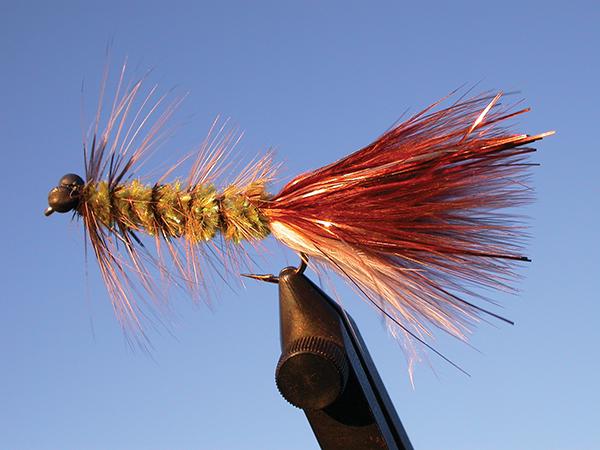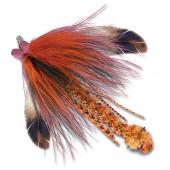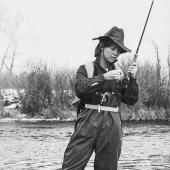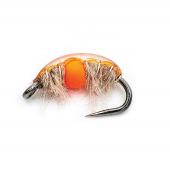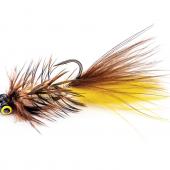Probe the Pigs
With the Nuclear Neapolitan.
For me, fishing began 27 years ago, at the age of five when my family and I would thread fat nightcrawlers onto bait hooks and fish for anything that swam. Several years later I picked up a fly rod, and at the same time began tying my own flies. Some caught fish; many did not.
Later, when I lamented my days of vacant stares onto a moving stream with nary a nibble, my circle of experts would ask if I’d ever tried a bugger. These flies, which can be tied up to three inches long, baffled me. I did not know how to cast them, nor did I know how to fish them once they sunk.
Only a few years ago did I finally catch a trout on a bugger. Since then, I have experimented with several different color patterns, and have finally come up with a combination that I think is deadly throughout the year on Montana’s lakes and streams.
Friends and I call it the Nuclear Neapolitan. It is not truly original, however—the color combinations may be unique, but the fly itself is a Wooly Bugger.
Materials
Hook: Dai-Riki 700 #4 or #2
Thread: Black 3/0 Uni-thread
Tail: White Marabou, Brown Marabou, Copper Flashabou
Rib: Medium Copper wire
Body: Spirit River Speckled Chenille Olive
Hackle: Brown or Grizzly Saddle Hackle or Schlappen
Eyes: Lead Dumbbell 5/32 or 3/16
Instructions
1. I usually tie this fly on a #4 or #2 4X long hook. Begin by tying in a shank's length of white marabou for a tail. Directly on top of that, tie in the same length of dark brown marabou.
2. Above these tail materials, add 10 to 15 strands of copper Flashabou.
3. Once the tail is completed, tie in a strand of medium copper wire about three inches long, and let this hang off the back for later use.
4. Just in front of the tail and the wire, tie in six inches of Olive Speckled Chenille, a fabulous new material made by Spirit River. This lime-green yarn is diffused with gold and green sparkles, which give the fly a magnetic quality. Double over the chenille and tie down the loose end. This allows you to twist the chenille to make a single strand with twice the width. Wrap this forward and tie it off near the eye of the hook.
5. Next, tie in a brown or grizzly saddle-hackle and palmer it back to where you have tied in the copper wire at the back of the hook. While applying tension to the hackle, weave the wire back to the eye of the hook. This secures the feather onto the chenille and gives the fly added durability.
One option that I employ often is to tie a set of lead dumbbell eyes just behind the eye of the hook. When retrieved, the lead gives the fly a jigging action that mimics the appearance of a wounded fry, or a crayfish. I usually fish this fly from the middle of the stream, cast it inches from the bank, and retrieve it slowly with long strips. Watch for fish to dash from their deep cover along the bank.
I have successfully fished the Nuclear Neapolitan on Cliff Lake, the Madison from Yellowstone Park to Greycliff, the Yellowstone and Gallatin during the summer, and the Missouri in the fall and spring. The copper Flashabou splashes light rays over the river-bottom on sunny days, and I can usually see trout turn from their holding spots six feet away to come and investigate.
Tie a few of these, and see if a new spin on an old fly gives you the success on which dreams are realized.
Jeff Hostetler is a full-time instructor at Gallatin College. He spends his winters riding at Bridger and the rest of the year fly fishing southwest Montana.


